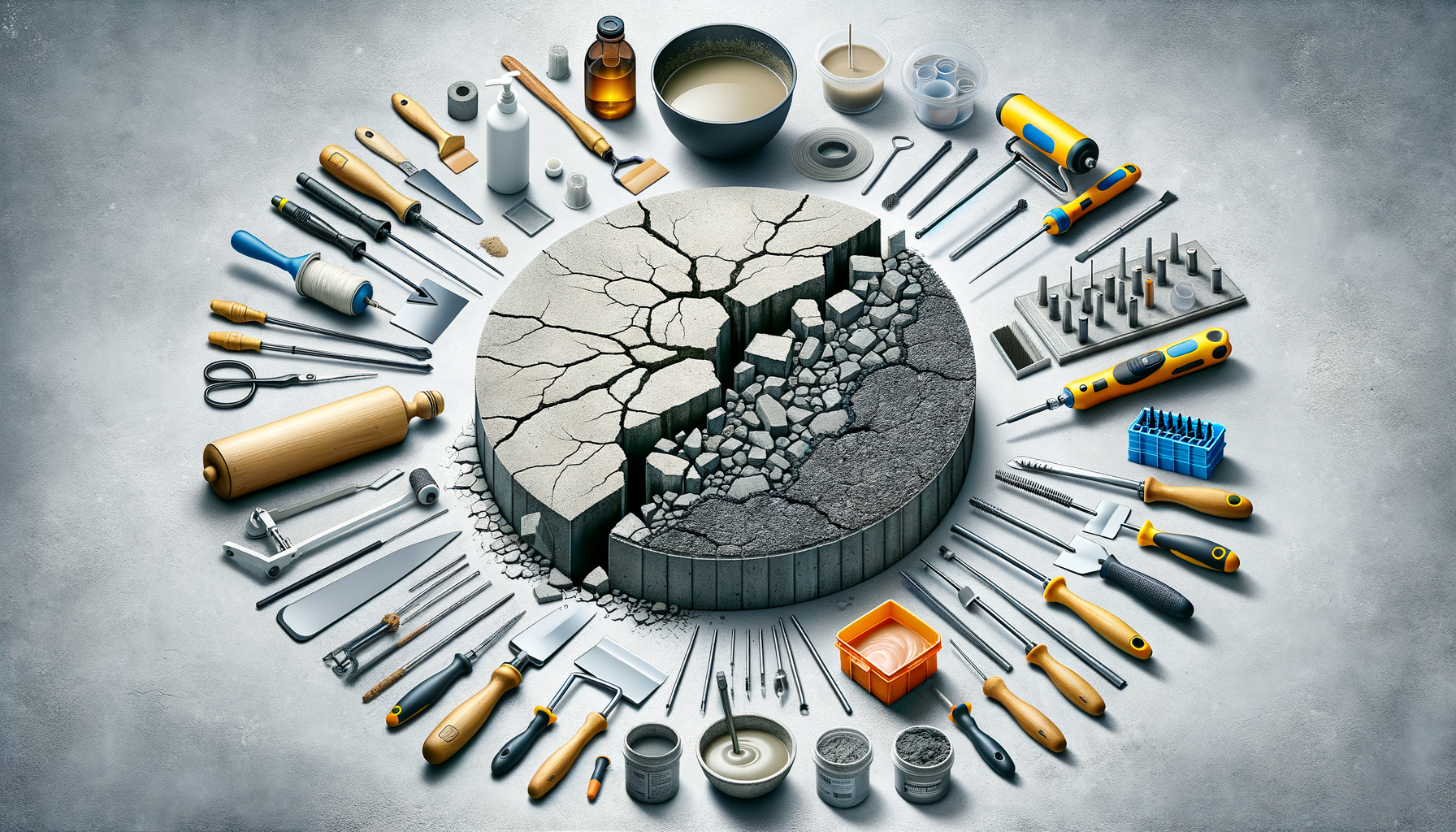Introduction to Concrete Crack Repair
Concrete is a widely used construction material known for its durability and strength. However, even the most robust concrete structures can develop cracks over time due to various factors such as environmental conditions, structural loads, and material shrinkage. These cracks, if left untreated, can compromise the integrity and aesthetic of the structure. Understanding the importance of concrete crack repair is essential for maintaining the longevity and safety of concrete surfaces.
Concrete crack repair is not just about aesthetics; it is crucial for preventing further deterioration and potential structural failures. By addressing cracks promptly, property owners can avoid costly repairs and ensure the safety of their buildings. This article delves into the techniques and methods used in concrete crack repair, offering insights into how to effectively manage and mitigate these common issues.
Understanding the Causes of Concrete Cracks
Before diving into repair methods, it’s important to understand what causes concrete to crack. Cracks can occur due to a variety of reasons, including:
- Thermal Expansion and Contraction: Concrete expands in hot weather and contracts in cold weather, leading to stress and potential cracking.
- Shrinkage: As concrete dries, it can shrink, leading to cracks if not properly managed during the curing process.
- Structural Loads: Excessive weight or pressure on concrete can cause it to crack, especially if the load exceeds the design capacity.
- Subgrade Settlement: Uneven settling of the ground beneath a concrete slab can lead to cracking.
Identifying the root cause of cracks is crucial in selecting the appropriate repair method. By addressing the underlying issues, you can prevent future cracks and extend the lifespan of the concrete structure.
Techniques for Concrete Crack Repair
Once the cause of the cracks is determined, choosing the right repair technique is the next step. Some common methods include:
- Epoxy Injection: This technique is used for repairing cracks as narrow as 0.002 inches. Epoxy resins are injected into the cracks to restore structural integrity.
- Routing and Sealing: This method involves enlarging the crack along its exposed face and filling it with a suitable sealant. It is effective for non-structural cracks.
- Stitching: For larger cracks, stitching involves drilling holes on both sides of the crack and installing metal stitches to hold the structure together.
- Grouting: This involves filling larger cracks with grout, which can be a mixture of cement and water or other binding materials.
Each technique has its own set of advantages and is chosen based on the type, size, and location of the crack. Proper application ensures the effectiveness of the repair.
Materials Used in Concrete Crack Repair
The choice of materials in concrete crack repair is critical to the success of the repair. Some commonly used materials include:
- Epoxy Resins: Known for their strong adhesive properties, epoxy resins are ideal for structural repairs.
- Polyurethane Sealants: These are flexible and can accommodate slight movements, making them suitable for dynamic cracks.
- Cement-Based Grouts: Used for filling larger voids and cracks, these grouts provide a solid bond.
- Silicone Sealants: Often used for exterior repairs due to their weather-resistant properties.
The selection of materials depends on factors such as the environment, crack size, and desired durability. Using high-quality materials ensures a long-lasting repair.
Conclusion: Ensuring Effective Concrete Crack Repair
Concrete crack repair is an essential aspect of maintaining the structural integrity and appearance of concrete surfaces. By understanding the causes of cracks and selecting the appropriate repair techniques and materials, property owners can effectively address these issues. Regular inspection and maintenance can prevent cracks from worsening and extend the lifespan of concrete structures.
Incorporating these repair strategies not only enhances the durability of the concrete but also contributes to the overall safety and value of the property. Whether you are a homeowner or a professional in the construction industry, mastering the techniques of concrete crack repair is a valuable skill that ensures the longevity of your concrete investments.




Leave a Reply